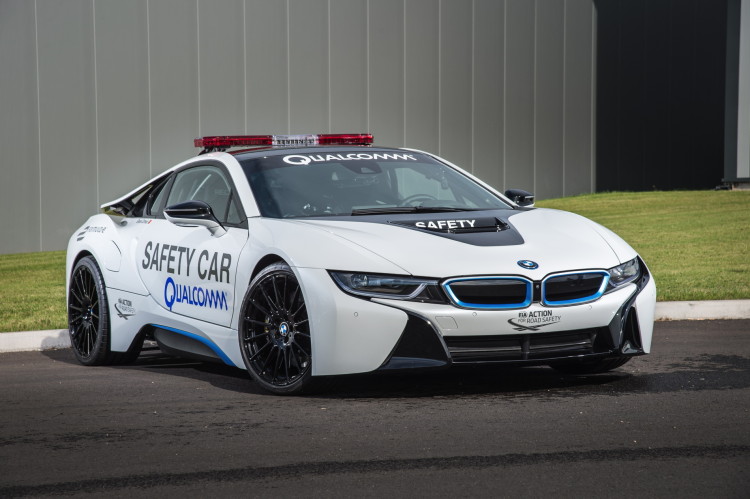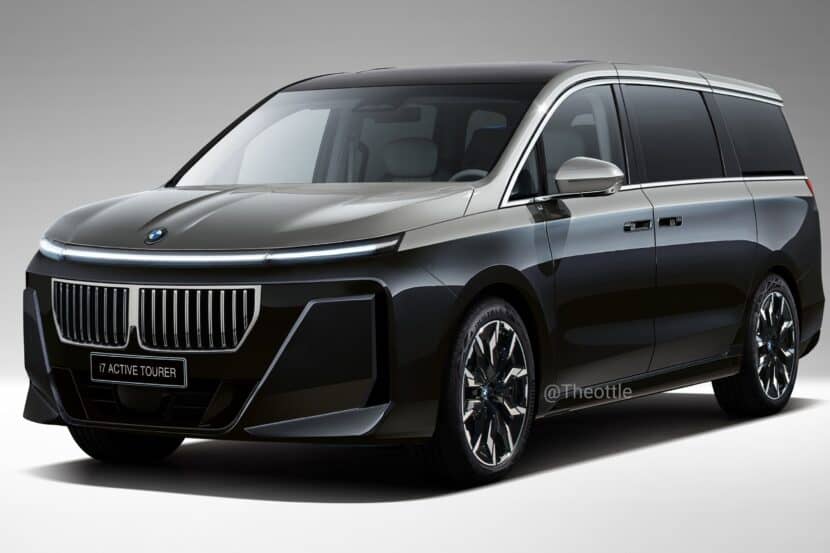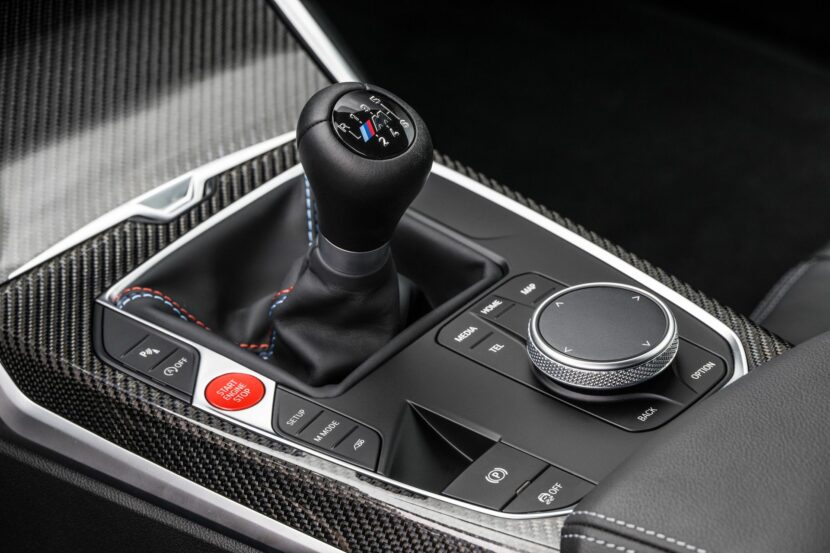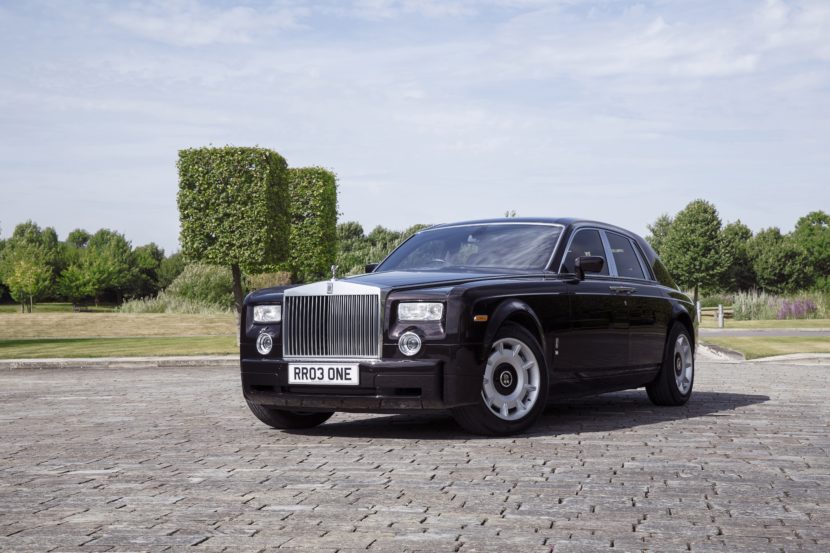BMW has recently become the official vehicle partner for the 2015/2016 FIA Formula E championship. For this partnership, BMW has developed a couple of Safety Cars, one of which being a BMW i8. But it’s no standard BMW i8, as this one has been fettled a bit for Safety Car duty and is more powerful, lighter and stiffer than the standard car. This has some people wondering if this Safety Car version of the i8 could lead to a possible BMW i8 S.
Ever since the BMW i8’s debut, fans have been asking for a lighter and more powerful version. This Safety Car version could be exactly what they’ve been asking for, if BMW ever puts it into production. For Safety Car duty, the i8 has gotten some chassis revisions, namely new upper wishbones, new Bilstein suspension and a 15 mm lower ride height. There’s also been some tweaked aerodynamics, new AP Racing brakes (six piston calipers up front with four pistons at the rear), 20” ATS Racing wheels and increased ventilation. So this Safety Car version of the BMW i8 will be lighter, more aerodynamic and even stickier to the road than the standard car.
But BMW didn’t just stop there. New battery technology has giving the BMW i8 a further range and even more power. The FIA Safety Car BMW i8 makes a combined 380 hp and has an overall range of 373 miles. But wait, that’s not all (in my best Billy Mays voice), BMW has given this i8 inductive charging, via Qualcomm’s Halo Prototype technology, which is a world first. Using this technology, the high-voltage battery in the BMW i8 can fully charge in about an hour.
That’s impressive.
All of these tweaks give this Safety Car version of the BMW i8 increased performance, better handling and even increased range. This is the best version of one of the best hybrid performance cars in the world. With this level of added performance, the BMW i8 could be propelled into performance territory currently occupied by cars like the Audi R8 and Mercedes-AMG GT. Throw in the fact that it’s far more efficient than both and this would be a slam dunk. If BMW were to put such a car into production, that is.
It wouldn’t be all that difficult for BMW to use some of the technology learned from this Safety Car to create an i8 S of sorts, but it would be difficult to sell. The BMW i8 is already a very low-volume car that costs BMW quite a bit of money to make and isn’t very cheap for the customers, either. So making another variant, which will probably sell in minute volumes, that’s even more expensive to make and would wear an even higher price tag, would be a difficult thing to do. However, on the off chance that BMW would make an i8 S, I think it would look a lot like this Safety Car. So if we do get one in the future, we already have a good idea of what to expect.







































































